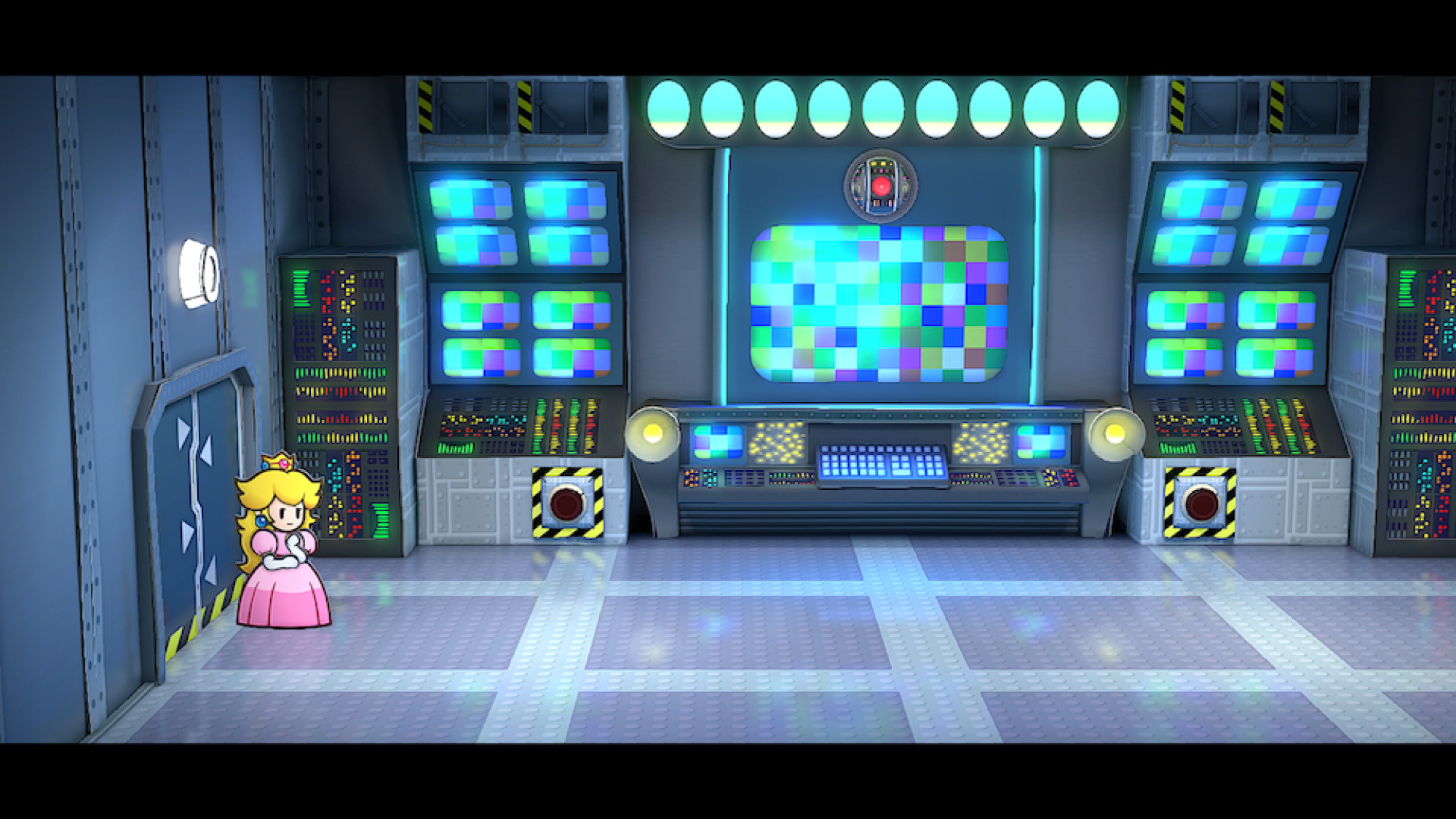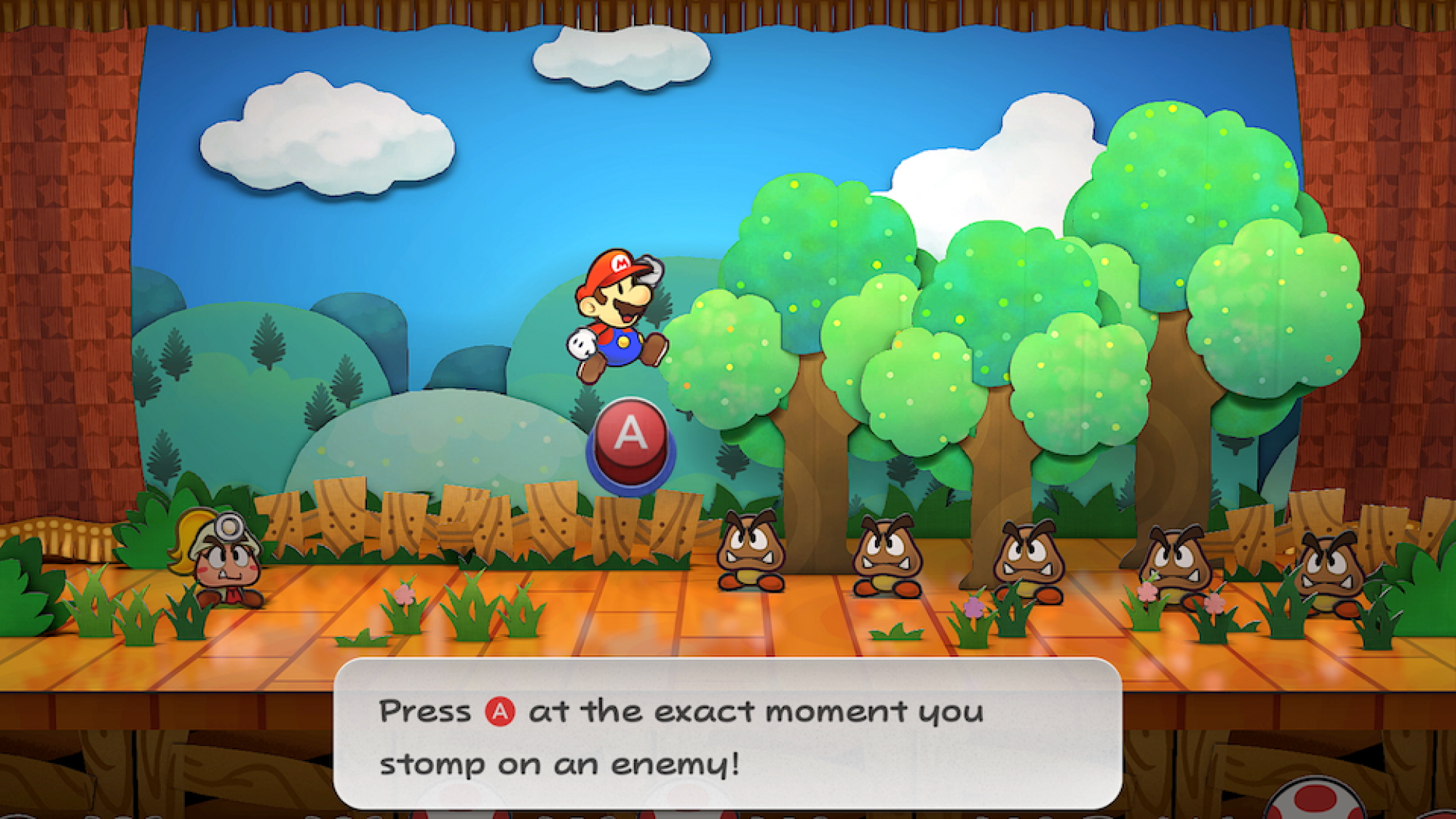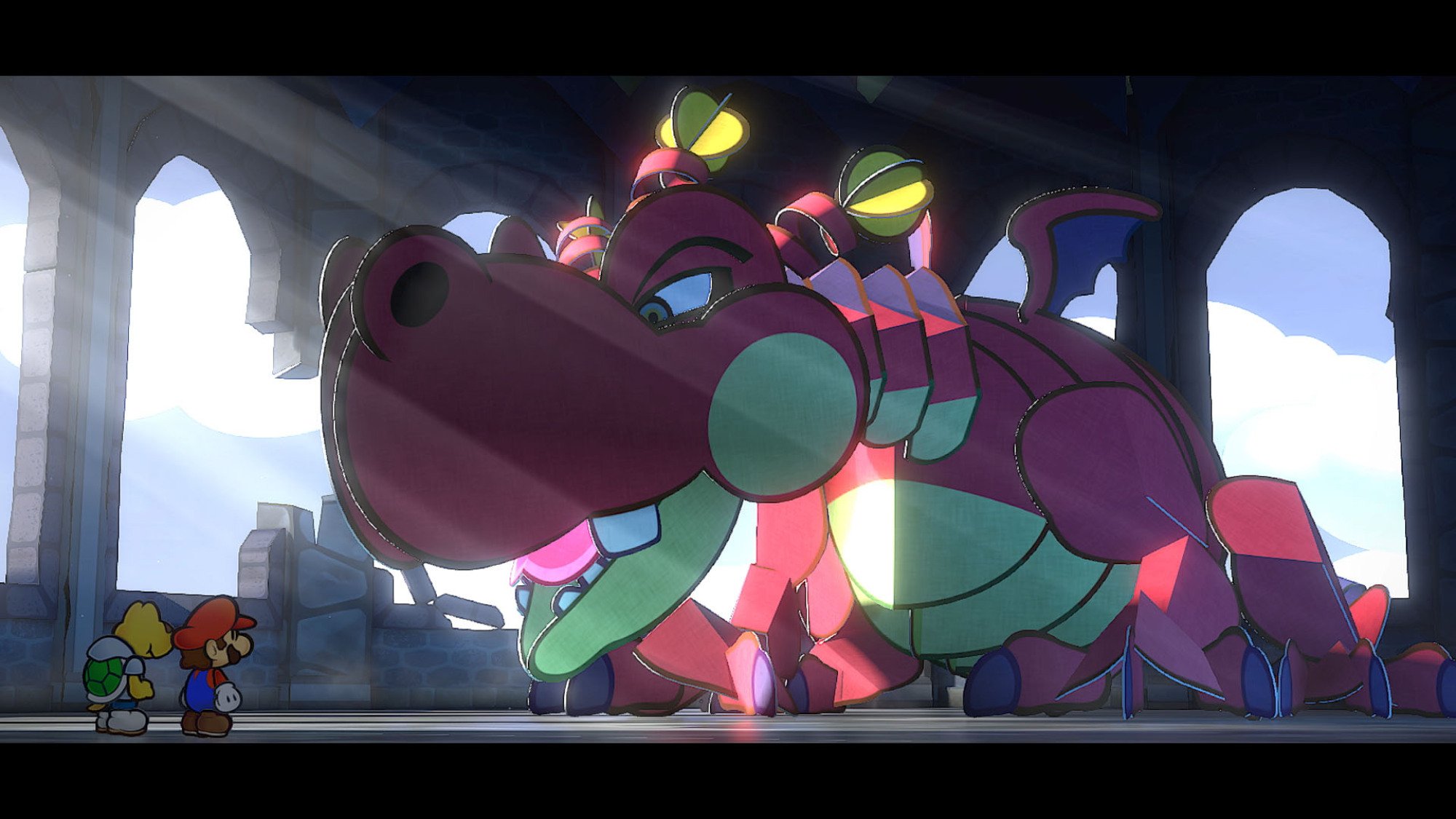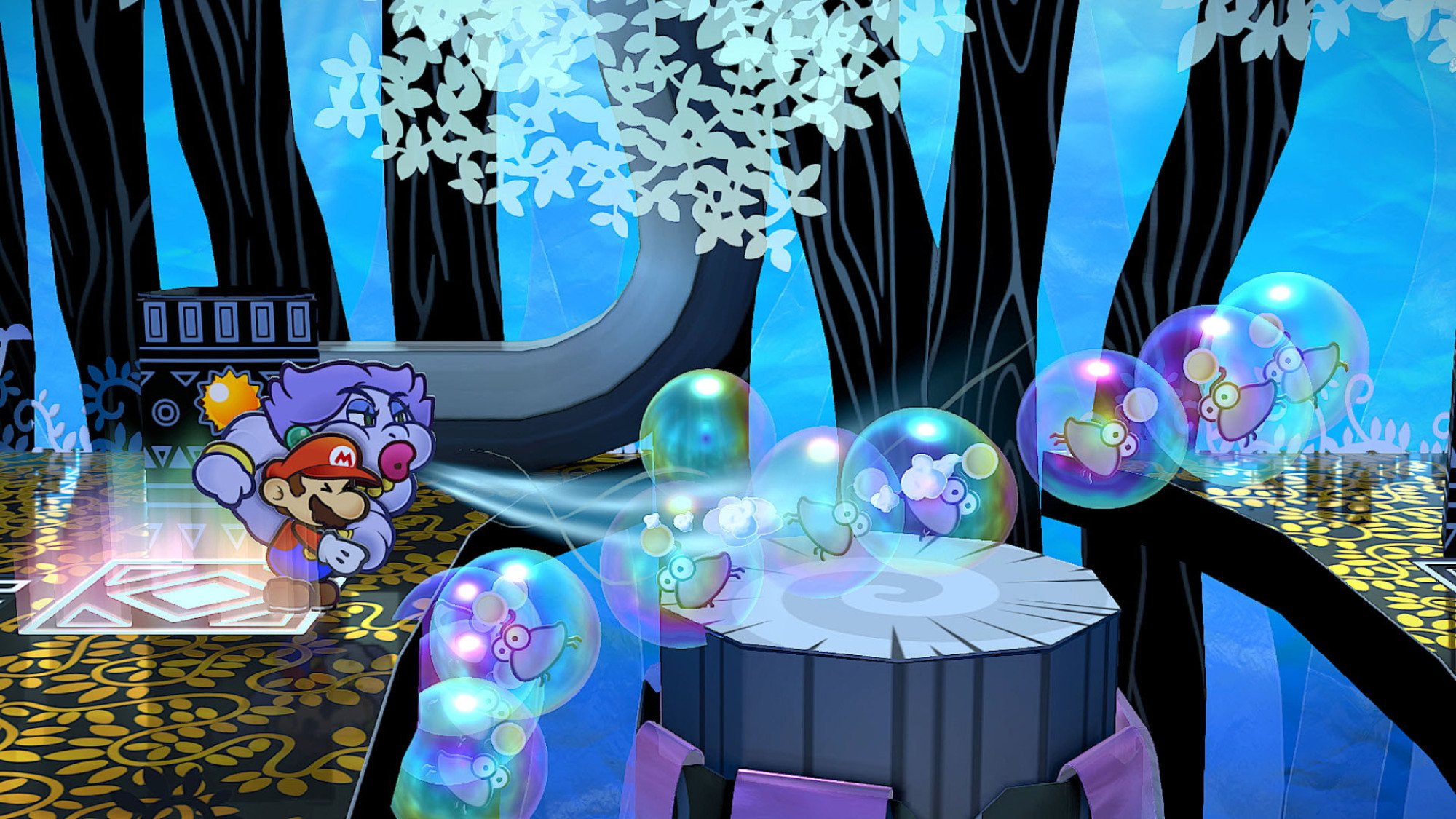Nintendo’s new Paper Mario: The Thousand-Year Door remake is unique in that it has a nearly unlimited capacity to make you smile, but it’ll similarly bum you the hell out.
That has nothing to do with the quality of either the original GameCube game or its new gussied-up Switch remake, though. Nintendo has tastefully and respectfully resurrected a beloved Mario RPG for the second time in six months, with gorgeous HD visuals, a revamped toe-tapping soundtrack, the same humor and wit that captivated fans 20 years ago, and deceptively simple turn-based combat.
The problem is that there have been a bunch of sterile, mediocre Paper Mario games since Thousand-Year Door’s original release, and this remake only serves to expose how bland the series has become since. But if you can get over that, as I did, this remake of The Thousand-Year Door is simultaneously a solid way to re-experience a classic and a quality method for playing it for the first time.
Paper Mario: The Thousand-Year Door plot

Peach’s interactions with the evil supercomputer are great.
Credit: Nintendo
As has typically been the case with Mario’s various forays into role-playing games over the years, Thousand-Year Door’s plot is less about keeping you glued to the edge of your seat with capital-P Plot, and more about making you giggle.
That’s not to say there isn’t a plot here, but it’s not the main draw by any means. Mario’s journey begins with a letter from Princess Peach inviting him to Rogueport, a grimy seaside city inhabited largely by scalawags that’s said to hide some kind of incredible treasure behind the titular Thousand-Year Door, which rests underneath the city.
Of course, Mario gets there and Peach is nowhere to be found, so he has to not only travel the world finding all seven Crystal Stars to open the Thousand-Year Door, but also, he has to find and rescue the princess from evildoers.
It’s a basic setup for a Mario story that works because, as is true even in the bad Paper Mario games, the writing is razor sharp. The motley crew of party members that Mario recruits along the way includes a spunky female Goomba university student, a salty old Bob-omb sailor, and my personal favorite, an infant Yoshi who emerges from an egg with a mohawk and a too-cool-for-school attitude.
All of these characters and more lend a ton of personality to the proceedings, especially as Mario humorously pantomimes his way through every interaction as a silent protagonist. All of the humor is best experienced yourself, so I won’t spoil too much of it, but my favorite bits included:
-
Princess Peach attempting to teach an evil supercomputer about love
-
Luigi frequently showing up, describing his own similar hero’s journey that’s happening off-screen, and constantly being accused of lying by his own partners
-
An entire chapter that’s like a Paper Mario version of Murder on the Orient Express
Unfortunately, all of these great characters and gags only shine a spotlight on how dreadfully boring the later Paper Mario games have been by comparison. Nintendo employees have flat-out admitted in recent years that they aren’t allowed to make the kinds of fun, unique takes on classic Mario characters that populate The Thousand-Year Door anymore due to some kind of bizarre corporate mandate.
Even having known that going in, I couldn’t have prepared for how dire The Thousand-Year Door would make games like Paper Mario: The Origami King feel by comparison. Unless Nintendo reverses that decision, releasing this remake is an all-time “hustling backwards” move by the company, because it just serves as a reminder of how much better this particular series used to be.
Paper Mario: The Thousand-Year Door mechanics

Nailing those button prompts always feels good.
Credit: Nintendo
I feel similarly about the mechanics of The Thousand-Year Door, which are so much more engaging than Origami King that I still kind of can’t believe that game was the way it was.
To be more specific, Thousand-Year Door has fairly traditional turn-based combat with the addition of timing-based button prompts that allow Mario and friends to enhance their own moves or guard against enemy attacks if done properly. Each battle features Mario and one of his several partners on the field at a time, though partners can be freely swapped out to fit different situations as needed.
While the core ideas here are simple, the designers wring as much depth as possible out of them. The game doesn’t have the strategic depth of Baldur’s Gate 3, by any means, but you do have to use your noggin to figure out how to defeat enemies based on their strengths and weaknesses.
Some, for example, can only be damaged after Mario jumps on them once, while others will hurt anyone who tries to jump on them. Enemies can also take up positions on the ground, ceiling, or in the air, affecting what kinds of abilities will hurt them. Typical status effects like confusion, sleep, burn, and freeze keep things spicy, too.
It’s a strong contrast to Origami King, whose combat too often devolved into easily solvable puzzles that strangely featured no RPG-like upgrades or progression at all, rendering most fights into a total waste of time. Thousand-Year Door’s upgrade mechanics aren’t too complicated (leveling up allows you to upgrade one of three core stats at a time), but they work nicely to create a welcoming RPG for kids that’s also fun enough for those with more experience with the genre to find something to chew on.
My only real mechanical gripes with Thousand-Year Door exist outside of combat. Most chapters take Mario into something resembling a traditional RPG dungeon, and these can be hit-or-miss. Some of them are paced well and designed cleverly, with puzzles fitting some kind of new ability you get in the dungeon, while others (particularly one set in a gladiator arena) are slow and repetitive. In general, even the best areas feature a little bit too much uninteresting backtracking.
All of that, as far as I can tell, was true in the original game, too. The biggest mechanical addition Nintendo made to this remake is a radial “partner wheel” menu that you can pull up at any time to switch between Mario’s partners in the field, given that they each have their own useful traversal and puzzle-solving abilities. This streamlines things a lot, considering you had to pause the game to switch partners in and out originally.
Paper Mario: The Thousand-Year Door graphics

Some of the lighting looks really nice.
Credit: Nintendo
It’s hard for me to perform a full audit of how Nintendo has enhanced Thousand-Year Door’s visuals, because I didn’t have the original game with me side-by-side while playing. But I’m not sure that matters, because the remake looks great on its own merits.
The Paper Mario art style has always been a true gem, lifting up even middling games with its tangible arts-and-crafts aesthetic. It’s lovely to watch buildings fold in and out as you enter them like shoebox dioramas, and the flat paper characters are all so expressive that they don’t look odd running around in a 3D world.
The lighting is expressive, the new HD resolution makes everything look sharp as hell, and the whole thing is generally a joy to look at, despite having the bones of a 20-year-old game. Great art direction always stands the test of time, and that is the case here.
Paper Mario: The Thousand-Year Door soundtrack and audio
Normally there isn’t much to say about the music in any Mario game other than “it’s great,” but the remake of Thousand-Year Door follows in the footsteps of other recent Nintendo remakes (Super Mario RPG, Xenoblade Chronicles: Definitive Edition) by including an all-new rearranged version of the soundtrack.
I suspect this will be controversial with some (as any changes to any remake always are) but there are two bits of good news here:
-
You can play with the old music if you like
-
The new music is very good
To put it broadly, most of the synthesized MIDI tones of the original game have been replaced by what sound like real instruments, namely a lot of horns and electric guitars. It’s definitely a different feel (Rogueport’s music is more bustling and energetic than shady and suspicious like it was originally), but all of it is catchy and fun to hear.
Paper Mario: The Thousand-Year Door challenge and difficulty

Bubble puzzles!
Credit: Nintendo
One thing I am not going to do is knock a Mario RPG, which is definitely aimed at a younger audience, for being too easy. That said, this is not a difficult game by any means.
Boss fights are almost universally easy as long as you’ve stayed on the intended leveling curve (don’t run away from fights!), with precious few encounters making me actually sweat. Puzzles can occasionally be slightly tricky, until you remember you can press a button to have one of your partners straight up tell you what to do most of the time.
Point being, if you want a hardcore, challenging RPG, I’m not sure why you’d come to Paper Mario in the first place. This game is pretty easy, and that’s fine.
Paper Mario: The Thousand-Year Door performance
I’ll keep this brief: The Thousand-Year Door remake runs at a steady 30 frames per second on Switch. I know, I know; ideally, a remake of a GameCube game would reach 60, right? But that’s not the case and it doesn’t bother me at all. If it bothers you, that’s cool, but we have different priorities.
I also noticed absolutely zero bugs worth addressing, for what that’s worth.
Is Paper Mario: The Thousand-Year Door worth getting?
In short: yes! This is a very good RPG that has earned its spot in the Nintendo pantheon.
But let me expand on that a bit. If you’re a longtime fan of the original expecting a radically different or hugely expanded version of that game, you may walk away a bit disappointed. This is fairly straightforward as remakes go, as it mostly just recreates the original experience with some new bells and whistles to whet modern appetites.
But if you’re like me and the original is one of the precious few notable GameCube games you didn’t play much of, Paper Mario: The Thousand-Year Door on Switch is probably the best way you can experience it. Just don’t let yourself get too upset about how much less cool the later Paper Mario games were while you play.
Topics
Nintendo
Nintendo Switch

